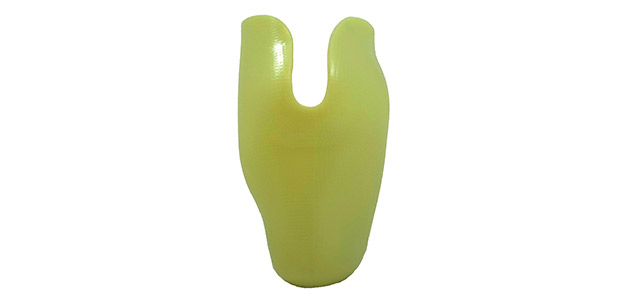
In 2014 Cascade Prosthetic Services was the first Canadian clinic to use an EMS socket. The EMS (Environmentally Managed Systems) Socket was invented by Carl Caspers, a long-time amputee and developer of vacuum socket technology. While the vacuum socket was quite successful, Carl hoped to create an even better technology that would optimize the difficult interface between the limb and the socket enabling an amputee to have normal function in day to day activities. This vision led Carl to invent EMS Socket, a multi-surface, custom fabricated, and dynamically activated prosthesis.
EMS socket is particularly designed for transtibial amputees. The inner and outer sockets can accommodate the various shape changes occurring during flexion and extension of the knee, and will feel totally natural on a patient. The multi-surfacing increases the surface area of the flexible inner socket by 100% and enhances the connection between the residual limb and socket by 400%. The broad surface area prevents high peak pressure loads during strenuous activities that are common in standard sockets.
In an EMS socket, the custom moulded elastomeric urethane in the inner socket allows a variety of custom features and enables addition of heavier components such as the Ossur Proflex Pivot foot and various hydraulic ankles. The custom urethane mould also provides lots of dimpling in the inner socket and a greater range of motion while descending and ascending hills in a natural gait. The dynamic structure of the prosthesis enables a person to have control of the prosthesis during all phases of gait. The compliant variable response capability of the EMS Socket also reduces sweating by minimizing high/low pressure differences. The high-tech features of the EMS socket assist an individual to lead a normal life without a constant reminder that they are wearing a prosthesis.
